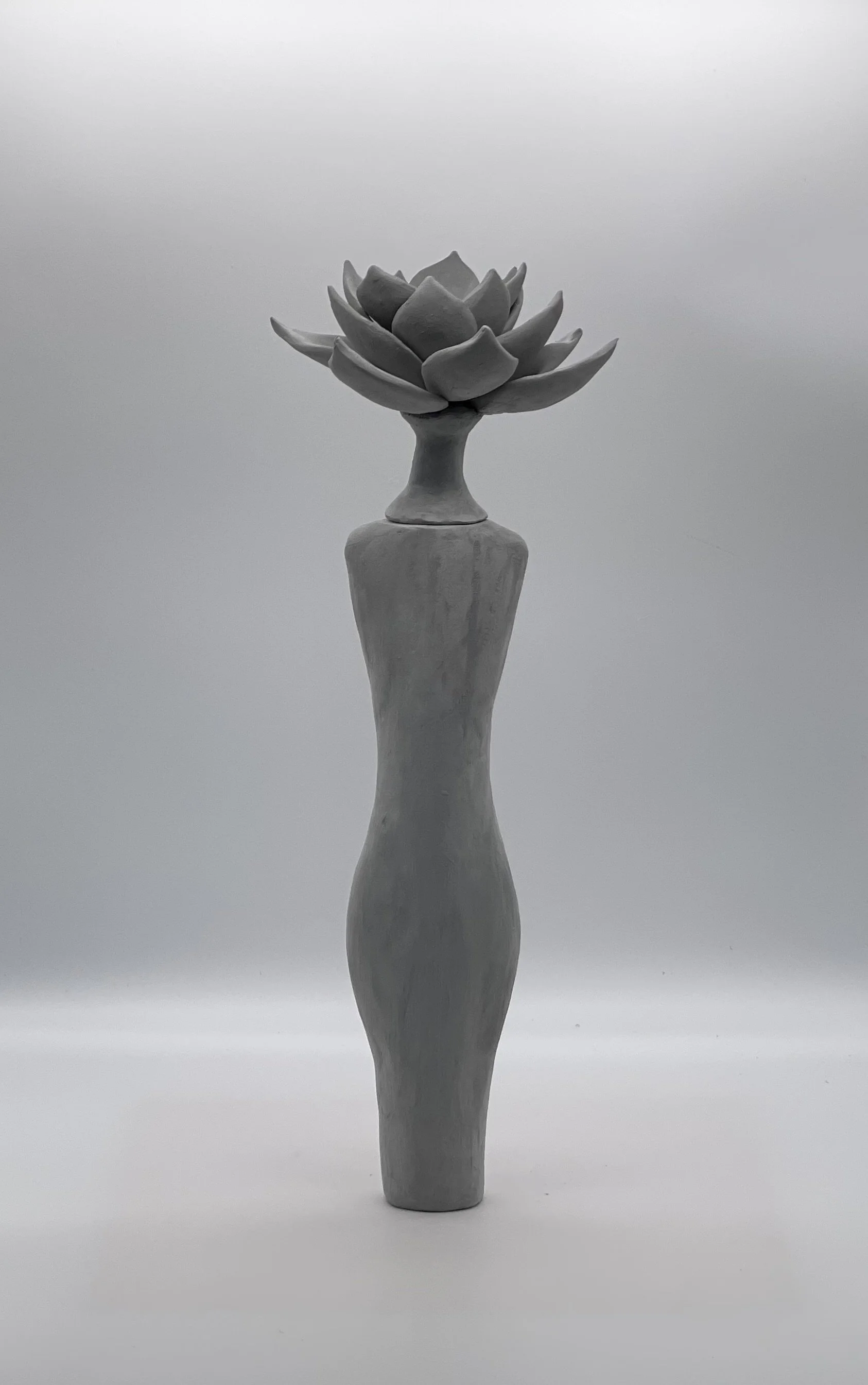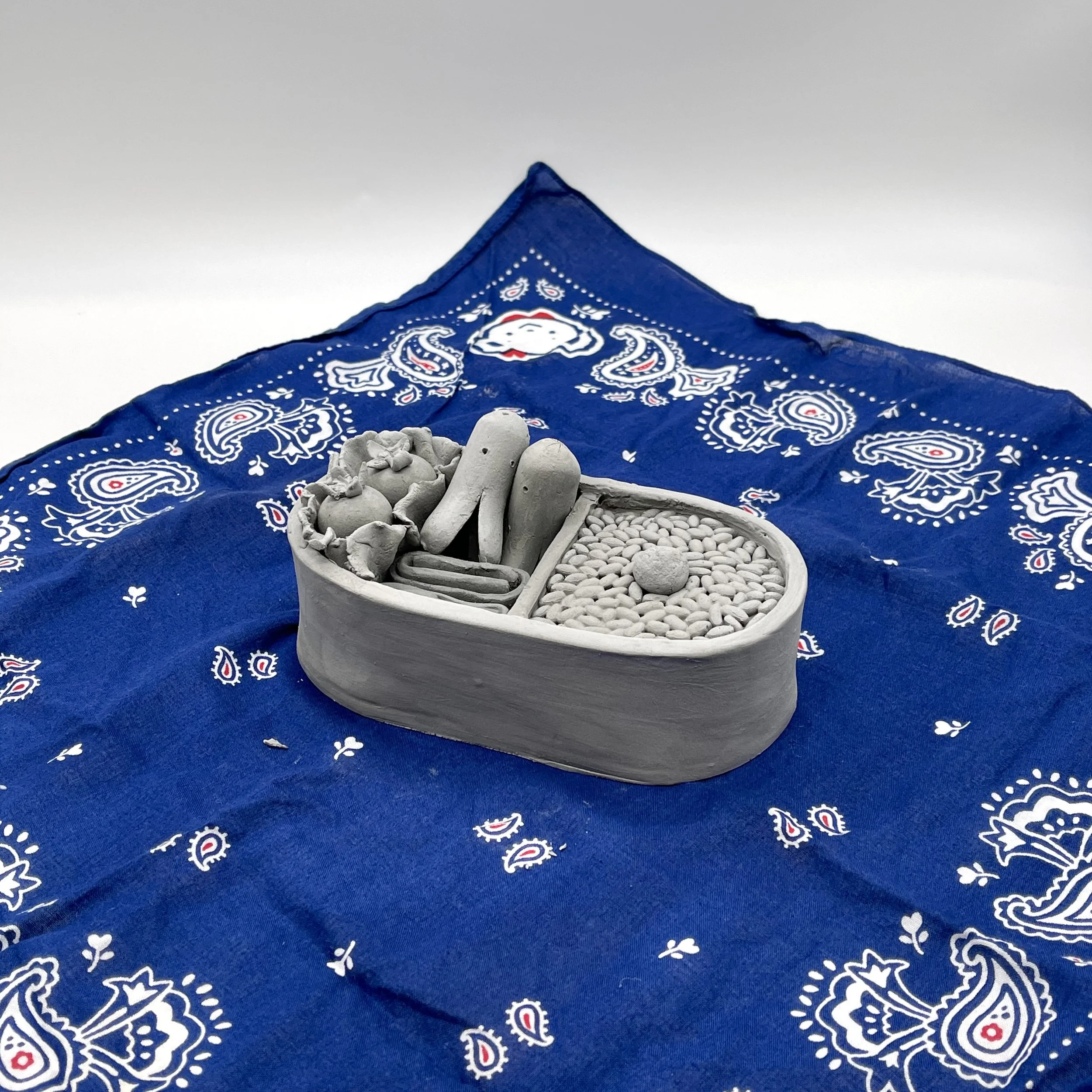scrutiny in pink
{2022}
reflected in the eye {目に映る} | the watchful gaze cast onto women
polymer clay, acrylic, resin, chalk, glass mirror
Lotus Ladies
{2021}
clay
I took inspiration from the hard-working Asian American women I grew up around. I was especially enamored with the amount of strength people like my mother and maternal grandmother have had. The piece features a female bodice, formed strictly to the Asian ‘ideal body’ a byproduct of the sexism ingrained in Asian society. The culturally imposed standardization is reflected in some of the stereotypes and fetishizations that emerge surrounding Asian women. The lotus (an element from my Chinese heritage) symbolizes self-regeneration and enlightenment, and despite the muddy waters lotus flowers root themselves in, a beautiful flower emerges. But, not to forget that below the surface, the lotus roots are tangled and messy. Under the smooth surface lies an internal battle between traditional roles and dreams to reach the surface and show its true beauty—the piece functions as a bottle to hold and conceal the roots of the lotus.
As a Japanese American, I heard the phrase “仕方がない” (shikata ga nai), which translates to “it cannot be helped,” quite often. The phrase holds within it the concept of acceptance of a difficult situation in order to make the best out of certain circumstances as the only thing that can be done. The resilience that emerges from this self-containment contributes to gender inequality. The rigid roles and high standards for women in Asia are continually perpetuated. Yet, I have met countless Asian American women who have shown me their ability to bloom out of the repressive mold that they started in. Although during its creation I had Asian society in mind, it is a piece I am sure women from around the world can relate to. The piece is an homage to those women, who have blossomed as a lotus regardless of the waters they were raised in, and hopefully my own self in the future.
Bento Box {2022}
clay
I sculpted a relatively simple bento consisting of rice, egg, sausage, and a small salad. Since this piece is a note to my younger self, I included my favorite handkerchief at the time, an item I still treasure. The relationship linking food and identity is complicated. For much of my childhood, I was made home lunches to bring to school. And up until the first grade, my mother handed me a small bento for lunch every morning. Looking back, I should have been more appreciative when receiving a little lunch made just for me. However, I was upset. Race and ethnicity weren’t even on my radar at six years old, so I learned through my predominantly anglo school peers. One way I learned was through my relationship with bentos. I was told many things about my loved-filled meals at lunchtime, primarily that classmates said it “smelled gross” or “looked gross,” followed by gags and giggles. Embarrassment led to begging my mother to make me “a brown paper bag lunch.” I was in turmoil over my cultural food, something I was taught to cherish and take pride in. The change of my lunches was a way for me to prevent myself from being labeled as different or “not American,” yet there would be enough subsequent instances to prove a change in lunch wasn’t the solution. Food was the one of the first occurrences of my identity being challenged.
update in progress…


